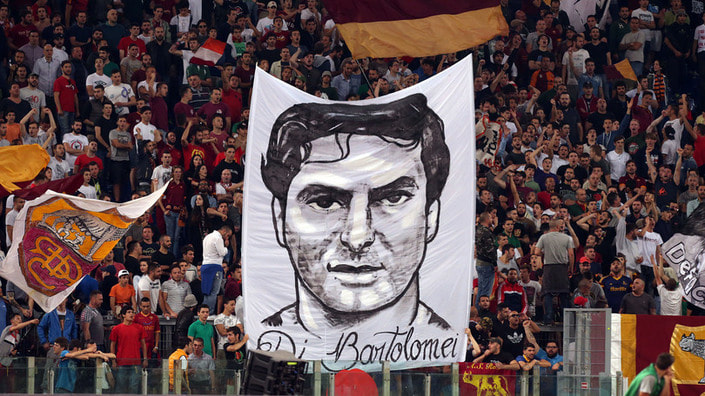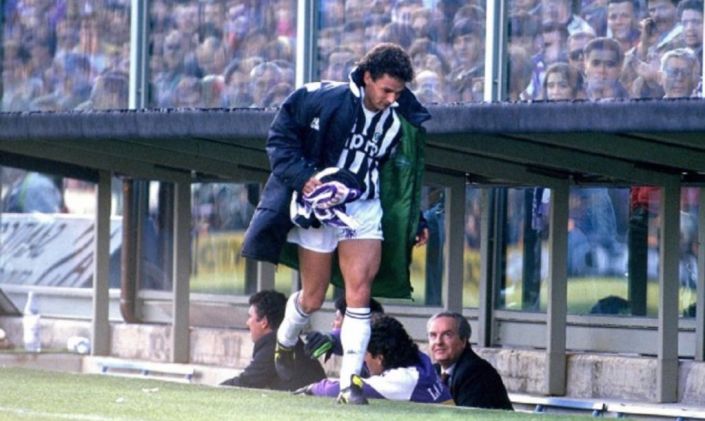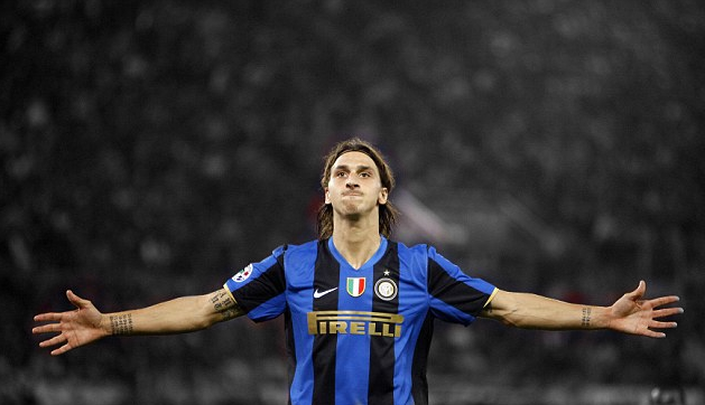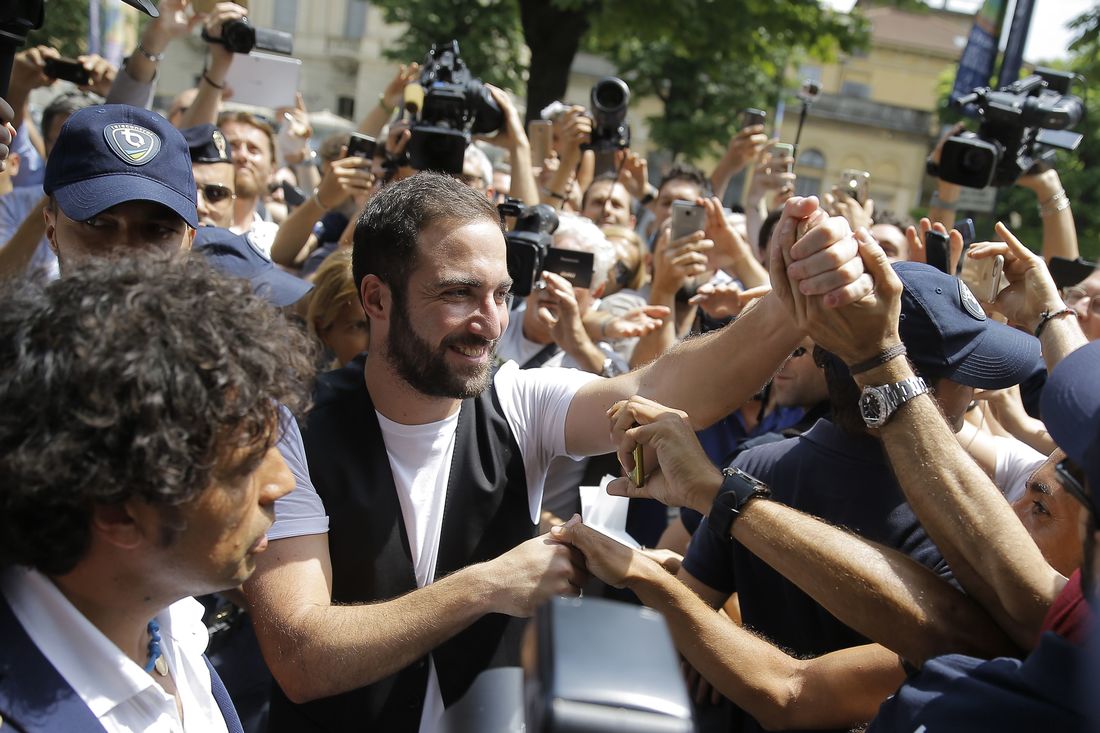In a transfer window brimming with narratives, Leonardo Bonucci’s move to AC Milan is undoubtedly Serie A’s biggest story. His decision to swap Turin for Milan has rocked Italian football and not only because it came as his new club’s new owners launched into an almost unprecedented splurge in a bid to restore the Rossoneri as title contenders.
Bonucci’s move was utterly unexpected, very swiftly completed and left fans on both sides of the divide incredulous, albeit for different reasons. And Bonucci’s transfer is not the only contentious deal this summer, with Federico Bernadeschi’s move from Fiorentina to bitter rivals Juventus provoking indignation in the Renaissance city. However, Bernadeschi and the new AC Milan captain are only the latest entries in a series of very controversial transfers that have caused a stir in Serie A.
Renzo De Vecchi: AC Milan to Genoa
Known as the “Son of God” for his precocious talent, De Vecchi became a household name in Italy when he completed his move to Genoa in 1913. A bank clerk by trade and a prodigious left-back on weekends, Genoa considered him the missing piece of the jigsaw as they looked to break Pro Vercelli’s hegemony.
But with Italian football still in its infancy, footballers found guilty of professionalism – which would only be officially recognised with the implementation of the Viareggio Charter in 1926 – were harshly dealt with by the Italian FA.
Genoa, however, were not to be denied their man. De Vecchi left his job in Milan and became “employed” by a Genoese bank, which agreed to pay him a salary way above average. His 24,000 lira transfer fee, and other elements of his pay, were instead hidden as “travel expenses”.
Dino Zoff : Mantova to Napoli
Zoff is best remembered for lifting the 1982 World Cup and winning almost everything there was to win with Juventus, but his move from Mantova to Napoli in 1967 has gone down in folklore.
The then 25-year-old had looked all but certain to head to either AC Milan or Inter throughout the summer, but last day of the transfer window came and went and Zoff remained a Mantova player. However, shortly after midnight – the deadline for transfers in Serie A – it emerged Napoli had pipped both Milanese rivals to the post and secured the goalkeeper for 120m lira.
How they did so, however, remains open to debate. Some suggest Napoli’s president Gioacchino Lauro pulled off a masterstroke, as he monitored the moves of AC Milan and Inter before outbidding them both.
Others claim Alberto Giovannini – the editor of the Roma newspaper, owned by Lauro’s father, Achille – passed himself off as the Napoli president with the help of the club’s manager Bruno Pesaola and, unbeknown to both Lauros, signed up Zoff.
The latter would end up playing 143 league games for Napoli, featuring in every Serie A match the team played during his stint at the feet of Mount Vesuvius, before joining Juventus in 1972.
Giuseppe Savoldi: Bologna to Napoli
Trevor Francis can claim to have been the first £1m player in British football – or £999,999, according to Brian Clough – but Giuseppe Savoldi had broken the barrier four years earlier, as he left Bologna for Napoli.
The Azzurri invested 2bn lira (£1.2m at the time) on the striker, who had scored 140 goals in all competitions during his seven seasons with Bologna and had inspired the Rossoblu to two Coppa Italia triumphs in 1970 and 1974.
The move down the “Autosole“, or ‘Sun Motorway’ as Italians call the motorway that connects Milan to Naples via Bologna, caused a major stir and not just because it made Savoldi the most expensive player in the world, breaking a record previously held by Johan Cruyff following his move to Barcelona from Ajax for £922,000 two years earlier.
For Napoli, who had finished third and runners-up in their previous two seasons, Savoldi was supposed to be the missing piece in the jigsaw, but during his four years at the San Paolo, the Partenopei never finished higher than fifth.

Giuseppe Savoldi in Bologna colours before he became the world’s most expensive player
Paolo Rossi: Vicenza/Juventus to Vicenza
Having scored 21 goals to drag Vicenza into the top flight in the 1976-77 season, Rossi netted 24 times in the following campaign as the provincial side defied expectations and finished second in the league.
Rossi’s performances earned him a call-up in the 1978 World Cup squad and put Vicenza and Juventus, who both owned 50% of the player, at loggerheads.
With the two parties unable to find an agreement, Rossi’s destiny was to be decided by a “game of envelopes” – to this day, a rather common scenario in Italian football – wherein both clubs put a figure in an envelope and the club that has made the highest bid wins.
Vicenza lacked Juventus’ financial clout and were expected to lose out on the player, only for the Biancorossi president Giuseppe Farina – who would later take charge of AC Milan – to bid 2.61bn lira (£1.75m at the time).
The fee, which was far more than Juventus had expected, made Rossi the most expensive player in the world, but Farina had overstretched himself and Vicenza went down the following season. Rossi moved to Perugia, where he became embroiled in a betting scandal that saw him banned for two years, before eventually joining Juventus in time to be selected for the 1982 World Cup where his six goals would fire Italy to the title.
Agostino di Bartolomei: Roma to AC Milan
In May 1984, Di Bartolomei came within 12 yards of captaining Roma to their first European Cup triumph, only for the Giallorossi to be denied on home soil as Liverpool won on penalties. A few months later, Di Bartolomei left his hometown side after 15 seasons and moved north to Milan in one of Serie A’s most bitter transfers.
“Why am I leaving? I don’t know,” he said, as he acrimoniously parted ways with the side he had steered to the Serie A title in the 1982-83 season.
In his first game against his former side, Di Bartolomei, who would tragically take his own life in 1994, celebrated wildly after scoring the opener, ensuring there would be no welcome party waiting at the Stadio Olimpico. His first return to Rome almost descended in a riot, after he was assaulted by Francesco Graziani in retribution for a horrendous challenge on Bruno Conti.
Ultimately, however, Di Bartolomei’s move to San Siro never reached the heights of his stay in Rome, as the Rossoneri only reached one Coppa Italia final during his three seasons at the San Siro.

READ ‘Ciao Capitano: the Life and Tragic Death of Roma Legend Agostino di Bartolomei’
Roberto Baggio: Fiorentina to Juventus
There are transfers that are controversial and transfers that almost incite urban riots. Roberto Baggio’s move from Fiorentina to Juventus fell into the latter category, as the streets of Florence erupted with rage.
The Divine Ponytail became the world’s most expensive player when Juventus signed him for £8m in the summer of 1990, while Fiorentina’s president Flavio Pontello was reportedly forced to take shelter inside the Artemio Franchi Stadium for two days after the transfer was announced, as fans laid siege to the club’s headquarters. Nine arrests were made and 50 people were left injured, as disgruntled fans pelted their team’s headquarters with a barrage of bricks and Molotov cocktails.
The reasons for the outrage were two-fold. During five seasons in Florence, Baggio had become an icon for Viola fans and if his departure was hard to take, Pontello’s decision to sell him to hated rivals Juventus smacked of betrayal.
On his first return to the Franchi, Baggio was met by a cacophony of boos and jeers, the player himself declined to take a penalty and when he was substituted, picked up a Fiorentina scarf tossed towards him as he walked off the pitch. The gesture only succeeded in antagonising Juventus fans, who never really warmed to Baggio during his three seasons in Turin. Some 27 years since that summer, Federico Bernardeschi has just followed the same route.

READ ‘The Transfer that Sparked a Riot: Baggio to Juventus (1990)’
Christian Vieri: Lazio to Inter
One of the most devastating strikers Serie A has ever seen, Vieri was never one for settling and in the summer of 1999, Inter became his ninth club, as they paid Lazio a world record 90bn lira – a fee of 69bn lira plus Diego Simeone – for his services.
Vieri, who had missed three months of his only season at Lazio due to a serious knee injury, would join Ronaldo in what promised to be the most potent strike force in the world.
“He’s as arrogant as they come,” thundered Lazio president Sergio Cragnotti, who had bought Vieri from Atletico Madrid only 12 months earlier. “We don’t want to sell him, but he wants to leave and I can’t keep someone like him at the club.”
Ultimately, however, the Lazio chairman would have the last laugh. While Vieri plundered 103 goals in 144 Serie A games with Inter, the dream partnership with Ronaldo never materialised, as the latter was struck down by a series of serious injuries.
Lazio, meanwhile, went on to win the title in Vieri’s first season in Milan and would stop Inter from winning the Scudetto in 2002, beating the Nerazzurri 4-2 in the last game of the season to hand the title to Juve.
Gabriel Batistuta: Fiorentina to Roma
“One title with this club is worth more than 10 with Milan or Juventus”, Batistuta famously stated when asked about his reluctance to leave Fiorentina.
Few footballers have embodied a club and connected with the fans as the man they called Batigol did in Florence. However, at 31, he finally allowed his head to rule over his heart and moved to Rome looking for that maiden Serie A title that had proved so elusive in Florence.
If Batistuta was keen to move to the capital, Roma were ready to welcome him with open arms. Still smarting from seeing cross-town rivals Lazio clinch the Scudetto the previous season, the Giallorossi parted way with £23.5m for the Argentine, still a world record fee for a player in his thirties.
The investment paid off handsomely, as Batistuta’s 20 goals in 28 Serie A appearances drove Roma to their first title in 28 years.
Zlatan Ibrahimovic: Juventus to Inter
The summer of 2006 saw Italy lift the World Cup for the fourth time, but it also saw Italian football rocked by Calciopoli, a scandal of almost unprecedented proportions.
Juventus were relegated to Serie B and stripped of the league titles they had won in the previous two seasons, while Lazio, Fiorentina, AC Milan and Reggina were hit by heavy penalties.
Inter, on the other hand, were the big winners. In almost unprecedented circumstances, the Nerazzurri were given the opportunity to strengthen their side, while simultaneously weaken one of their main rivals.
While Gigi Buffon, Alessandro Del Piero, Pavel Nedved and David Trezeguet opted to remain in Turin, Zlatan Ibrahimovic and Patrick Vieira chose an immediate return to Serie A and moved to Inter, while Fabio Cannavaro joined Real Madrid.
The Swede, in particular, became public enemy number one after completing his €24.8m to one of Juve’s main rivals, with Juventus fans accusing him of being a mercenary.
In customary fashion, Ibra was unfazed by the criticism and went on to score 57 league goals in his three seasons at Inter, winning three consecutive league titles.

READ ‘Three Colours of Zlatan, Part II: Inter‘
Gonzalo Higuain: Napoli to Juventus
In April 1975, with Napoli two points behind Juventus in the title race, Jose’ Altafini came off the bench to score an 88th minute winner against his former side, earning himself the moniker of “Core ‘ngrato” – ungrateful heart in Neapolitan dialect.
If Altafini’s move from Napoli to Juventus had hurt, Gonzalo Higuain’s trip across the same route 46 years later was a lot harder to stomach for Napoletani. After all, the former had spent seven seasons at the San Paolo and was 34 when he moved to Turin, while the latter was in the prime of his career.
In what would turn out to be his last season in Naples, Higuain scored 36 goals in 35 Serie A games, breaking Gunnar Nordhal’s record of league goals scored in a season, one that had stood since 1949-50.
A few months later, the Bianconeri triggered Higuain’s €90m release clause, making the Argentine the most expensive player in the history of Italian football and the third most expensive player of all time.
Napoli fans, who had hoped the former Real Madrid man could follow Diego Maradona’s path and guide the Azzurri to a first Scudetto since 1990, even had to endure the ignominy of seeing Higuain score the winner in his first appearance against his former side.
To make matters worse, Higuain won the domestic double in his first season at the Juventus Stadium.
*Disclaimer*: This list only contains transfer between Serie A clubs and only transfers where a fee was involved. For example, Pasquale Bruno’s transfer from Juventus to Torino and Andrea Pirlo’s move from AC Milan to Juventus were both free transfers.
Words by Dan Cancian: @mufc_dan87
A journalist by trade and a glory hunter since birth, Dan is a regular contributor to Red News, Manchester United’s oldest fanzine and to other United websites. Fell in love with Italian football when it was cool.

